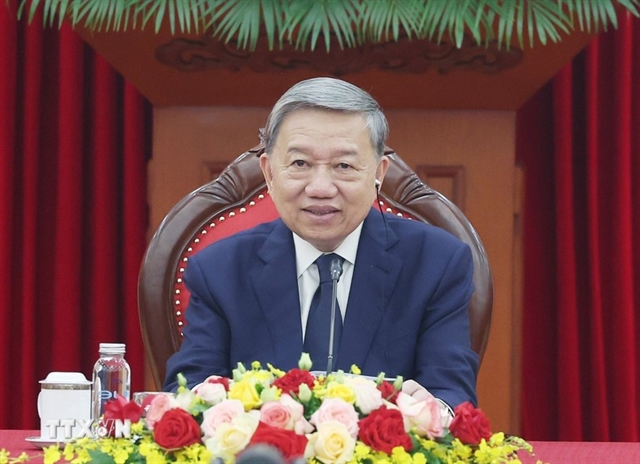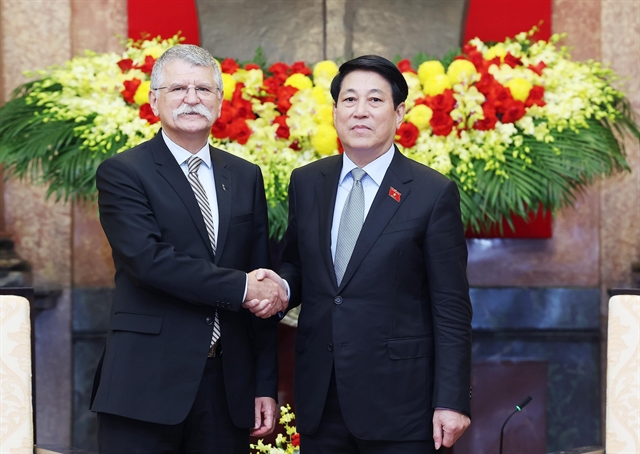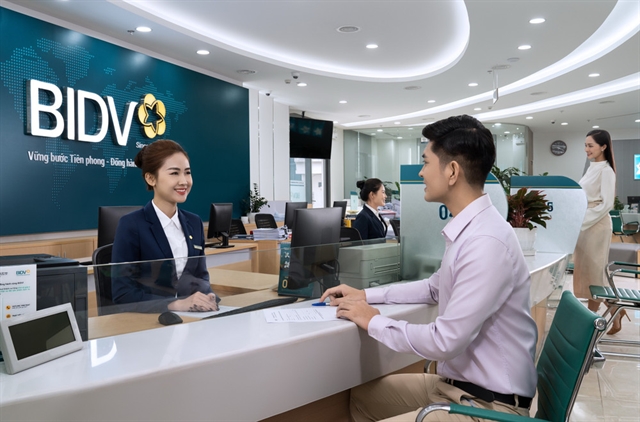 Economy
Economy
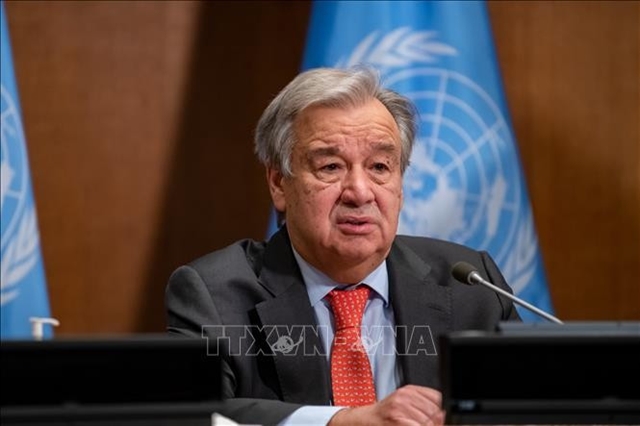
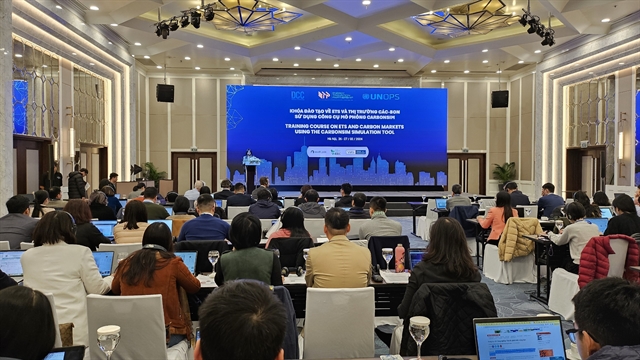 |
| Participants at the training course on Monday morning in Hà Nội. — VNS Photo Ly Ly Cao |
HÀ NỘI — Training has begun for an emission trading system, with stakeholders already in training ahead of the launch of a pilot scheme next year.
The initiative comes at a crucial time as Việt Nam is pushing to reduce carbon emissions and making efforts to fulfil its obligations under the Paris Agreement.
An emission trading system (ETS) is a market instrument used by the EU to reduce greenhouse gas emissions in a cost-effective manner
The establishment of a robust ETS plays a pivotal role as stated in the updated nationally determined contribution (NDC) in 2022. By placing a cap on total emissions and allowing companies to buy and sell credits, ETS introduces economic incentives for businesses to reduce their emissions efficiently.
"Even though Việt Nam is going to pilot an ETS next year, there are many challenges that remain," said Đặng Hồng Hạnh, co-founder of Energy and Environment Consultancy JSC (VNEEC).
The two-day first capacity-training course in Việt Nam started on Monday in Hà Nội and is organised by the Southeast Asia Energy Transition Partnership (ETP) in cooperation with the Department of Climate Change (DCC), Ministry of Natural Resources and Environment (MONRE).
It targets representatives from ministries, development donors and financial institutions, with a comprehensive and systematic training curriculum on ETS and carbon markets using a market simulation tool.
Fritzie Vergel, of ETP, said: “The training programme will contribute to enhancing the understanding of stakeholders regarding their respective positions and roles in the development of Việt Nam’s carbon market. In addition, these activities will facilitate closer collaboration among participants, aiming to establish and effectively operate the market.”
Mai Kim Liên, deputy director of the Department of Climate Change under the MONRE, emphasised the supportive activities of international organisations in the development of the Vietnamese carbon market.
"Within the framework of the Memorandum of Understanding between the Department of Climate Change and the United Nations Office for Project Services (UNOPS), the ETP programme encompasses various supportive initiatives,” Liên said.
“One such activity involves the selection and guidance on utilising a system simulation tool for greenhouse gas emission allowance trading. This tool aims to facilitate a deeper understanding among relevant parties regarding the functionalities, operational processes, management, and trading of emission allowances and carbon credits on the trading platform.
“It serves as highly valuable support for stakeholders involved in the establishment and successful operation of the greenhouse gas emission allowance trading and carbon credit markets in Việt Nam.”
“In some countries, they have three to five years of preparation before piloting, but we only have one year.”
“There are many new technical and managerial requirements that require significant resources, and numerous legal documents and implementation guidelines need to be issued in 2024.
"This undertaking necessitates strong political commitment and active engagement from diverse stakeholders. Simultaneous execution of multiple tasks is imperative, alongside the selection of an appropriate scale for the pilot phase."
The carbon market is characterised by volatility, necessitating adaptable policies and ongoing adjustments.
However, the policy-making process in Việt Nam is time-consuming and involves multiple steps, according to Hạnh.
The second training course is specifically designed for representatives from energy-intensive enterprises, business associations, and media, and will be held from February 29 to March 1. — VNS

